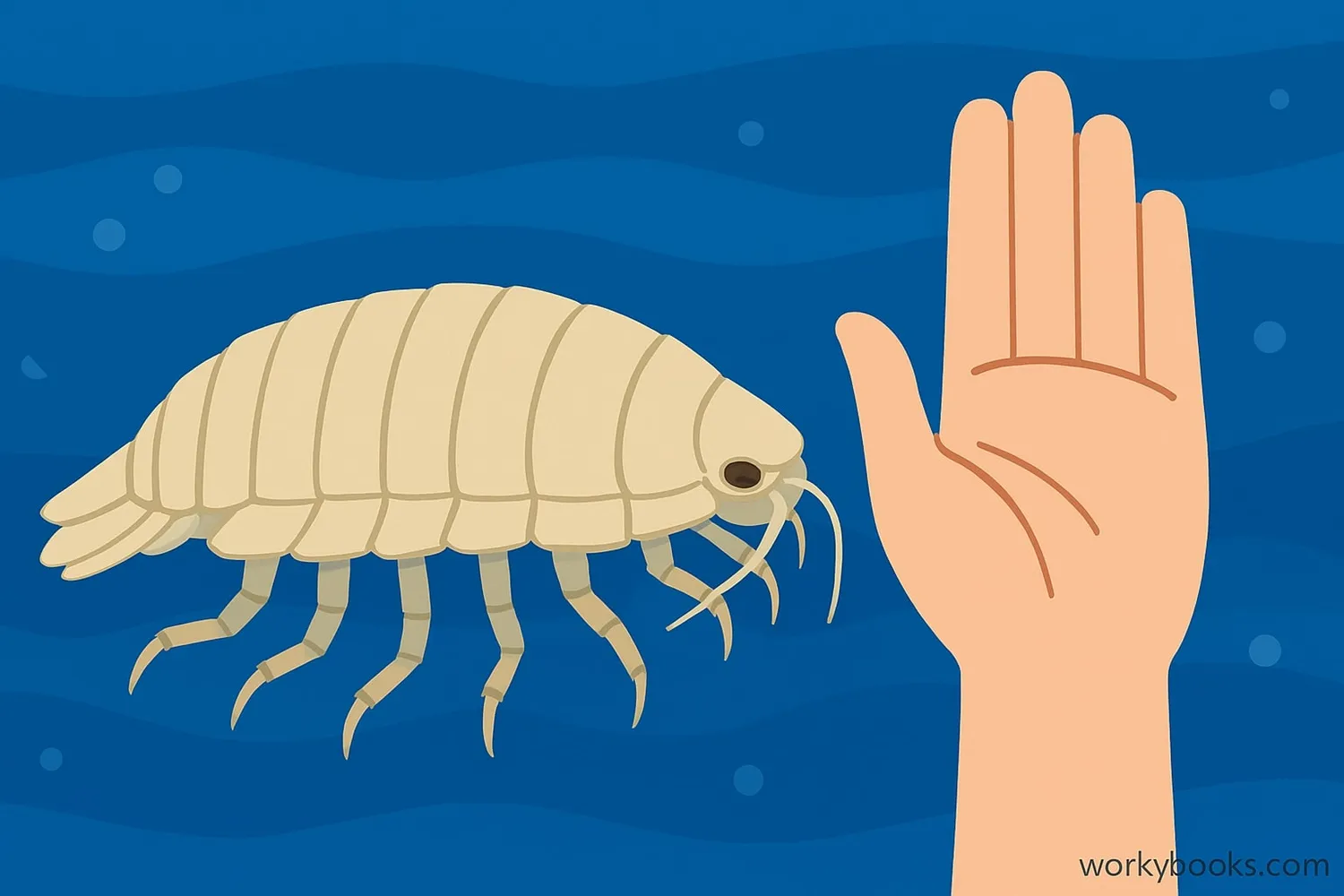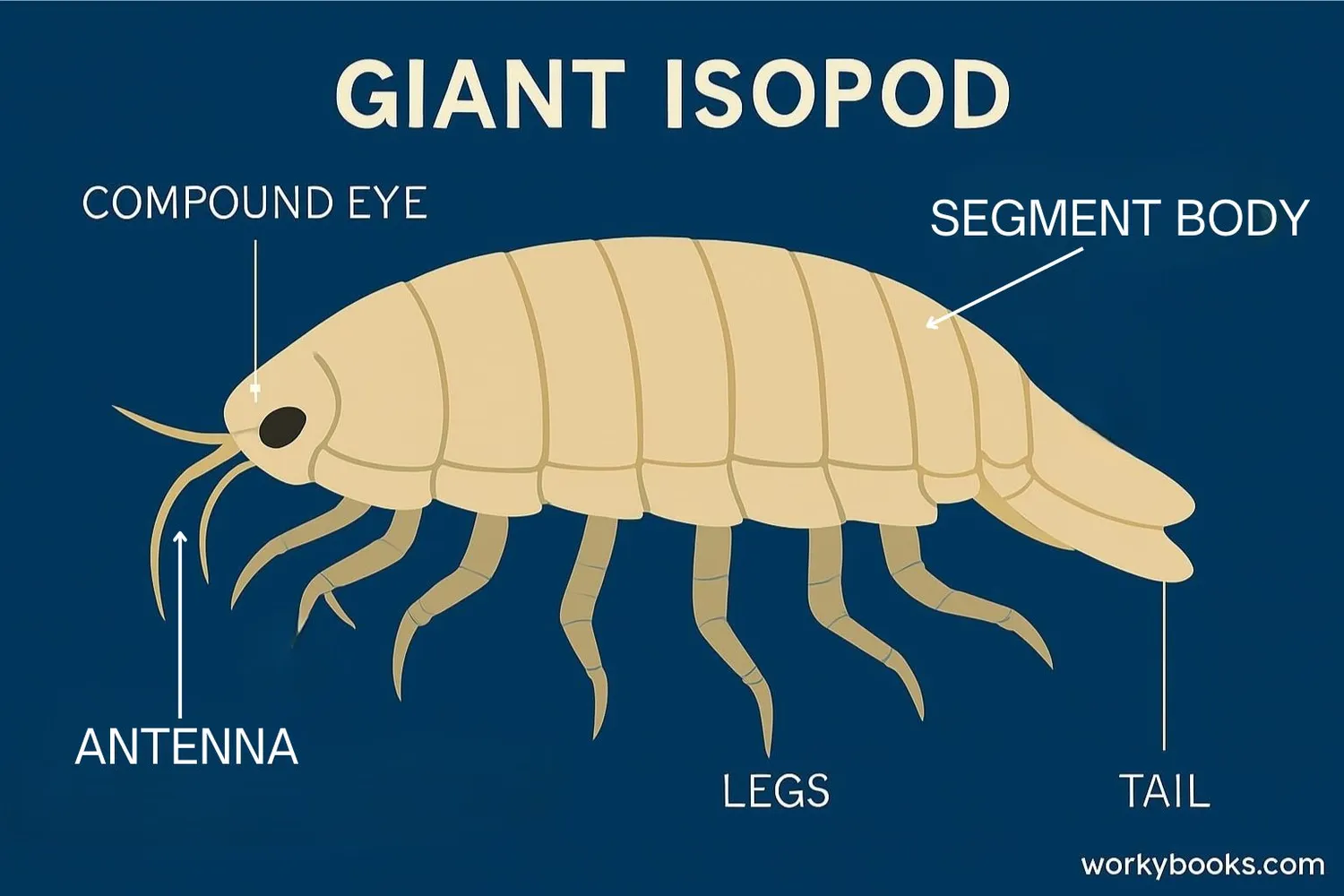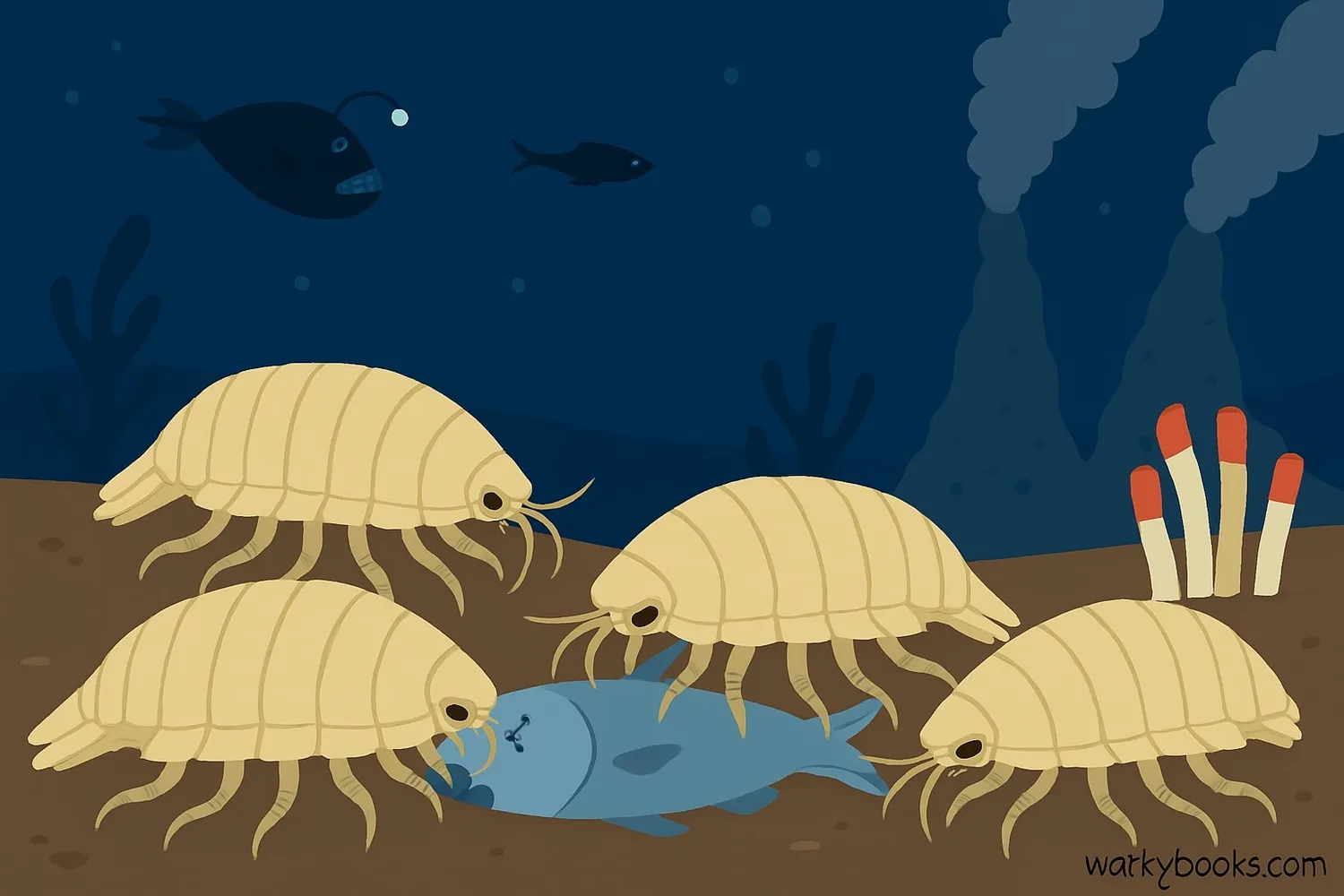Giant Isopods - Definition, Examples, Quiz, FAQ, Trivia
Discover the amazing deep-sea crustaceans that look like giant pillbugs!
What is a Giant Isopod?

Giant isopods are fascinating deep-sea creatures that belong to the crustacean family, which includes crabs, shrimp, and lobsters. The scientific name for the giant isopod is Bathynomus giganteus.
These incredible creatures look like enormous pillbugs or roly-polies you might find in your garden, but they can grow up to 16 inches (40 cm) long! That's about the size of a small dog! Giant isopods are one of the largest crustaceans in the world and live in the deepest, darkest parts of the ocean.
Did You Know?
Giant isopods are related to the small pillbugs you find in your garden! They're like the giant cousins of those tiny creatures.
Physical Characteristics

Giant isopods have some amazing physical features that help them survive in the deep ocean:
Armor Plating
Hard, calcareous exoskeleton made of overlapping segments
Many Legs
14 legs for walking and swimming
Compound Eyes
Large eyes with many lenses to see in dark waters
Antennae
Two pairs of antennae to sense their environment
Color
Pale lilac or pinkish coloring that helps them blend in
Their hard exoskeleton protects them from predators and the intense pressure of the deep sea. When threatened, they can curl into a tight ball, just like their smaller pillbug relatives!
Habitat & Behavior

Giant isopods live in one of the most extreme environments on Earth - the deep ocean:
Depth Range
550 to 7,020 feet (170-2140 meters) below sea level
Temperature
Near freezing (about 4°C or 39°F)
Pressure
Extreme pressure - 100 times greater than at sea level
These deep-sea creatures are scavengers, which means they mostly eat dead animals that sink from above. They use their strong jaws to bite through tough materials like whale bones! Because food is scarce in the deep ocean, giant isopods have adapted to survive long periods without eating - up to 5 years! When they do find food, they can eat so much that they have trouble moving afterward.
Deep-Sea Gigantism

Giant isopods are an excellent example of a phenomenon called deep-sea gigantism. This is when creatures living in the deep ocean grow much larger than their relatives in shallower waters.
Scientists have several theories about why this happens:
Why Deep-Sea Gigantism Occurs:
• Food scarcity - Larger size helps store more energy between meals
• Colder temperatures - Slow metabolism allows for longer growth periods
• Pressure - High pressure might support larger body structures
• Predator avoidance - Bigger size deters some predators
Other examples of deep-sea gigantism include the giant squid, Japanese spider crab, and king-of-herrings oarfish. These creatures show how life adapts to extreme environments in amazing ways!
Giant Isopod Quiz
Test your knowledge about giant isopods with this quiz! Answer all 5 questions to see how much you've learned.
Frequently Asked Questions
Here are answers to common questions about giant isopods:
Fun Giant Isopod Trivia
Discover some amazing facts about these deep-sea creatures!
Size Champions
The largest giant isopod ever recorded was 2.5 feet (76 cm) long! That's longer than most house cats!
Big Appetites
When food is available, giant isopods eat so much they become unable to move! They've been known to eat until they're literally stuffed.
Research Value
Scientists study giant isopods to understand how creatures adapt to extreme environments, which might help in the search for extraterrestrial life!
Ancient Lineage
Giant isopods are considered "living fossils" because they've remained relatively unchanged for over 160 million years!


